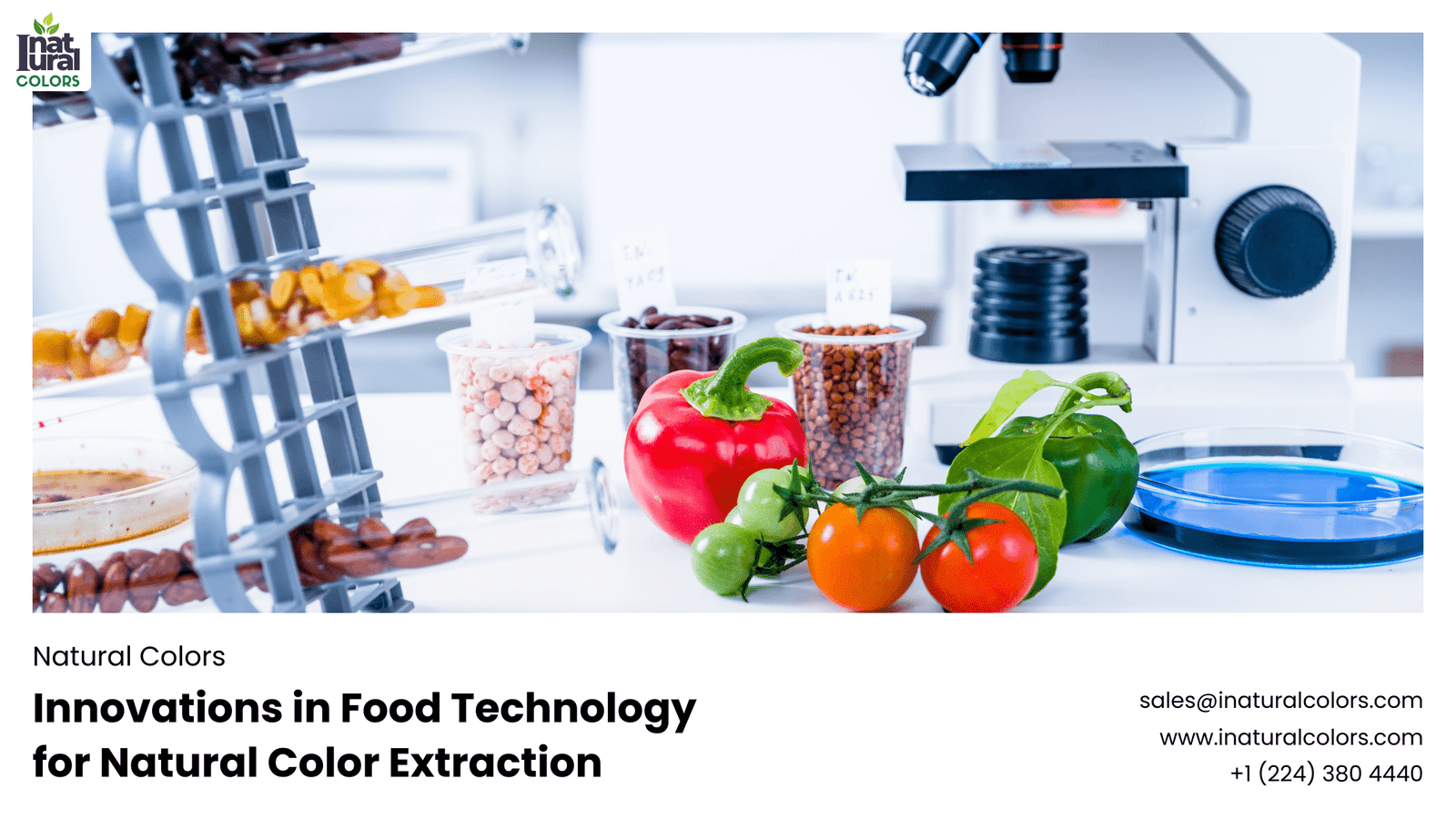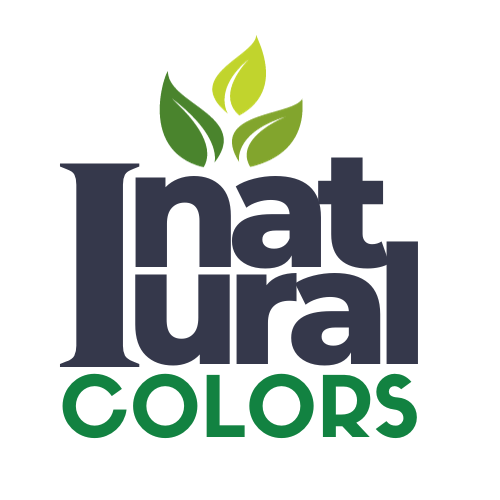Beautiful Plants For Your Interior

Natural Color Extraction – Outline
- Introduction
- Brief overview of the importance of natural color extraction in food technology.
- The shift from synthetic to natural colors in the food industry.
- The Evolution of Food Coloring
- Historical use of natural colors.
- The rise of synthetic dyes.
- Current trends and consumer demand for natural colors.
- Why Natural Colors Matter
- Health benefits.
- Environmental impact.
- Consumer preferences and perceptions.
- Sources of Natural Colors
- Plant-based sources.
- Animal-based sources.
- Mineral-based sources.
- Key Innovations in Natural Color Extraction
- Advanced extraction techniques.
- Biotechnology and genetic engineering.
- Sustainable sourcing methods.
- Supercritical Fluid Extraction (SFE)
- How SFE works.
- Advantages of SFE in natural color extraction.
- Examples of SFE in practice.
- Ultrasonic Assisted Extraction (UAE)
- Principles of UAE.
- Benefits of using UAE.
- Case studies showcasing UAE effectiveness.
- Enzyme-Assisted Extraction (EAE)
- The role of enzymes in extraction.
- EAE process overview.
- Success stories with EAE.
- Microwave-Assisted Extraction (MAE)
- How MAE differs from traditional methods.
- Efficiency and benefits of MAE.
- Applications of MAE in the industry.
- Biotechnology and Genetic Engineering
- Engineering plants for higher pigment production.
- Microbial production of natural colors.
- Innovations in genetic modification for color extraction.
- Sustainable and Ethical Sourcing
- Importance of sustainability in natural color extraction.
- Methods for ethical sourcing.
- Impact on local communities and ecosystems.
- Challenges in Natural Color Extraction
- Stability and consistency.
- Cost implications.
- Regulatory hurdles.
- Future Trends in Natural Color Extraction
- Emerging technologies.
- Potential market growth.
- Innovations on the horizon.
- Case Studies of Successful Natural Color Innovations
- Highlighting companies leading the way.
- Specific products utilizing natural colors.
- Consumer reception and market impact.
- Conclusion
- Recap of the importance of natural color extraction.
- The future outlook for natural colors in the food industry.
- FAQs
- Why are natural colors preferred over synthetic ones?
- What are the most common natural color sources?
- How does sustainability impact natural color extraction?
- What are the challenges in using natural colors?
- What future innovations can we expect in natural color extraction?
Innovations in Food Technology for Natural Color Extraction
Introduction
Imagine biting into a bright red strawberry-flavored candy and knowing that the vibrant hue comes from natural sources rather than synthetic chemicals. That’s the promise of innovations in food technology for natural color extraction. As consumers increasingly demand healthier, more sustainable food options, the food industry is shifting from synthetic dyes to natural colors. This transformation is driven by advancements in extraction techniques, biotechnology, and sustainable sourcing methods.
The Evolution of Food Coloring
Historical Use of Natural Colors
Centuries ago, our ancestors used natural ingredients like beet juice, turmeric, and saffron to add color to their foods. These natural dyes not only enhanced the visual appeal of dishes but also offered health benefits.
The Rise of Synthetic Dyes
With the advent of industrialization, synthetic dyes became popular due to their vibrant colors and cost-effectiveness. However, concerns over health risks and environmental impact have led to a resurgence in the use of natural colors.
Current Trends and Consumer Demand for Natural Colors
Today, consumers are more health-conscious and environmentally aware. They prefer natural ingredients, pushing the food industry to innovate and adopt natural color extraction methods.
Why Natural Colors Matter
Health Benefits
Natural colors often come from fruits, vegetables, and other plants that contain antioxidants and other beneficial compounds. Unlike synthetic dyes, they pose fewer health risks.
Environmental Impact
Synthetic dyes can be harmful to the environment during production and disposal. Natural colors, on the other hand, are biodegradable and generally have a smaller environmental footprint.
Consumer Preferences and Perceptions
Consumers perceive natural colors as safer and more nutritious. This perception drives market demand and encourages companies to invest in natural color extraction technologies.
Sources of Natural Colors
Plant-Based Sources
Plants are the most common sources of natural colors. For example, red can be extracted from beets, yellow from turmeric, and blue from spirulina.
Animal-Based Sources
Certain natural colors are derived from animals, such as cochineal extract from insects, which produces a vibrant red.
Mineral-Based Sources
Minerals like iron oxides and titanium dioxide also provide natural colors, especially in products like candies and cosmetics.
Key Innovations in Natural Color Extraction
Advanced Extraction Techniques
Modern extraction methods, such as supercritical fluid extraction and ultrasonic assisted extraction, have revolutionized the way natural colors are obtained, making the process more efficient and sustainable.
Biotechnology and Genetic Engineering
By manipulating genes, scientists can enhance the pigment production in plants and microorganisms, leading to more vibrant and stable natural colors.
Sustainable Sourcing Methods
Sustainability is a key focus in natural color extraction. Methods like organic farming and fair trade practices ensure that the extraction process is ethical and environmentally friendly.
Supercritical Fluid Extraction (SFE)
How SFE Works
SFE uses supercritical fluids, typically carbon dioxide, to extract pigments. The fluid acts as a solvent, separating the desired compounds from the raw material.
Advantages of SFE in Natural Color Extraction
SFE is efficient and produces high-purity extracts without leaving harmful residues. It’s also environmentally friendly, as it uses CO2, which is recyclable and non-toxic.
Examples of SFE in Practice
SFE is used to extract carotenoids from carrots and astaxanthin from algae, both of which are used as natural food colorants.
Ultrasonic Assisted Extraction (UAE)
Principles of UAE
UAE uses ultrasonic waves to create cavitation bubbles in the solvent. When these bubbles collapse, they release energy that helps break down the cell walls of the raw material, releasing the pigments.
Benefits of Using UAE
UAE is faster and more efficient than traditional extraction methods. It also requires less solvent, making it more environmentally friendly.
Case Studies Showcasing UAE Effectiveness
Studies have shown that UAE can effectively extract anthocyanins from blueberries and betalains from beets, both of which are used in natural food coloring.
Enzyme-Assisted Extraction (EAE)
The Role of Enzymes in Extraction
Enzymes break down the cell walls of the raw material, making it easier to extract pigments. This method is particularly useful for extracting colors from tough plant materials.
EAE Process Overview
The raw material is treated with specific enzymes that target the cell walls, followed by a solvent extraction to obtain the pigments.
Success Stories with EAE
EAE has been successfully used to extract lycopene from tomatoes and curcumin from turmeric, both popular natural colorants.
Microwave-Assisted Extraction (MAE)
How MAE Differs from Traditional Methods
MAE uses microwave energy to heat the solvent and raw material, speeding up the extraction process. This method is faster and more energy-efficient.
Efficiency and Benefits of MAE
MAE reduces extraction time and solvent usage, resulting in higher yields of natural pigments. It also preserves the quality of the extracts.
Applications of MAE in the Industry
MAE is used to extract chlorophyll from green plants and anthocyanins from berries, both of which are used in the food and beverage industry.
Biotechnology and Genetic Engineering
Engineering Plants for Higher Pigment Production
Through genetic engineering, scientists can create plant varieties that produce higher levels of pigments, making extraction more efficient and cost-effective.
Microbial Production of Natural Colors
Certain microorganisms can be engineered to produce natural pigments. For example, yeast and bacteria can be modified to produce carotenoids and anthocyanins.
Innovations in Genetic Modification for Color Extraction
Advanced genetic techniques allow for the precise manipulation of genes, leading to the production of stable and vibrant natural colors.
Sustainable and Ethical Sourcing
Importance of Sustainability in Natural Color Extraction
Sustainable practices ensure that natural color extraction does not harm the environment or deplete natural resources.
Methods for Ethical Sourcing
Ethical sourcing involves fair trade practices, organic farming, and ensuring that local communities benefit from the extraction process.
Impact on Local Communities and Ecosystems
Sustainable sourcing supports local economies and preserves ecosystems, ensuring a continuous supply of natural colors without environmental degradation.
Challenges in Natural Color Extraction
Stability and Consistency
Natural colors can be less stable than synthetic dyes, posing challenges in maintaining consistent color in products.
Cost Implications
Extracting natural colors can be more expensive than using synthetic dyes, impacting the overall cost of the final product.
Regulatory Hurdles
Regulations regarding the use of natural colors vary by region, creating challenges for companies looking to market their products globally.
Future Trends in Natural Color Extraction
Emerging Technologies
Innovations such as nanotechnology and advanced bioprocessing techniques are set to revolutionize natural color extraction, making it more efficient and scalable.
Potential Market Growth
As consumer demand for natural products continues to rise, the market for natural colors is expected to grow significantly.
Innovations on the Horizon
Future innovations may include the development of new natural color extraction methods that are even more sustainable and cost-effective, as well as improvements in the stability and application of natural colors in various food products.
Case Studies of Successful Natural Color Innovations
Highlighting Companies Leading the Way
Companies like GNT Group and Chr. Hansen are pioneers in natural color innovation, developing novel extraction techniques and expanding the range of natural color options available.
Specific Products Utilizing Natural Colors
Products such as organic candies, plant-based beverages, and natural cosmetics prominently feature these vibrant hues derived from natural sources.
Consumer Reception and Market Impact
Consumers are increasingly choosing products with natural colors, driven by health concerns and a desire for transparency in food labeling. This shift has influenced product development strategies across the food industry.
Conclusion
In conclusion, innovations in food technology for natural color extraction are transforming the food industry by offering safer, more sustainable alternatives to synthetic dyes. Advances in extraction methods, biotechnology, and sustainable sourcing are driving this evolution, meeting consumer demands for healthier and environmentally friendly products. As technology continues to advance, the future looks promising for natural colors, with ongoing research and development poised to enhance their stability, cost-effectiveness, and versatility.
FAQs
Why are natural colors preferred over synthetic ones?
Natural colors are preferred due to their perceived safety, health benefits, and environmental sustainability compared to synthetic dyes.
What are the most common natural color sources?
The most common natural color sources include plants (e.g., fruits, vegetables, herbs), animals (e.g., insects like cochineal), and minerals (e.g., iron oxides).
How does sustainability impact natural color extraction?
Sustainability ensures that natural color extraction methods are environmentally friendly, supporting long-term viability and ethical practices.
What are the challenges in using natural colors?
Challenges include maintaining color stability, managing costs, and navigating regulatory requirements across different regions.
What future innovations can we expect in natural color extraction?
Future innovations may include advancements in biotechnology, nanotechnology, and sustainable extraction methods to improve efficiency and application of natural colors.



